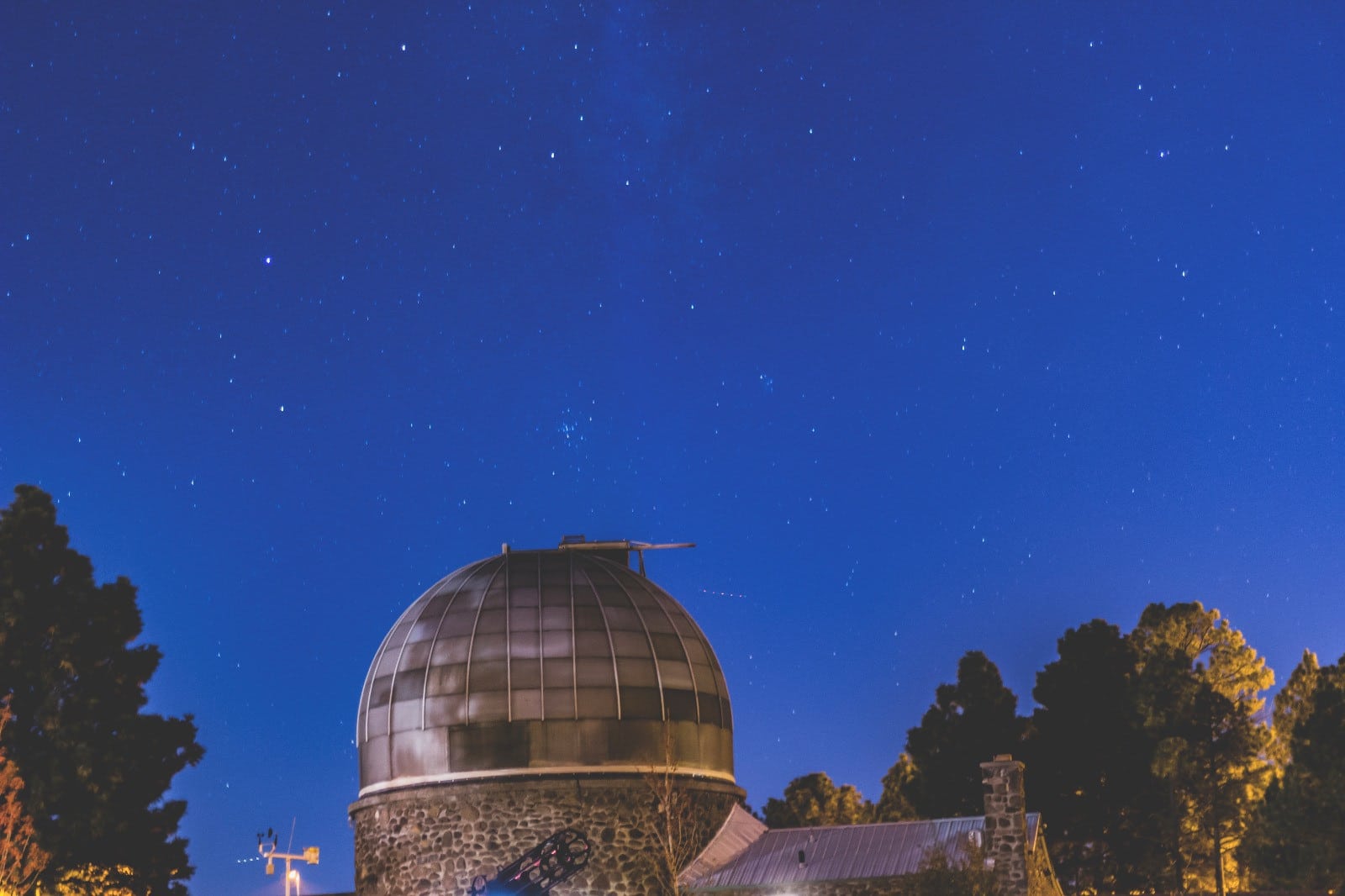
By Heidi Toth
NAU Communications
One Friday afternoon in the fall semester, half a dozen Northern Arizona University graduate students sat around a table in a gathering area, eating Oreos and discussing a mysterious space object a telescope had picked up. A few of their professors—some new to the university, part of an expanding department, others for whom NAU is a longtime home—joined them, discussing what they knew and what they thought about the object, now thought to be an interstellar asteroid.
Before long, the group swapped cookies for a whiteboard and markers and calculated the projected likelihood of discovery of such an object when a large survey telescope goes online soon. And with that, a session of Astrocookies turned into a paper —“Implications for Planetary System Formation from Interstellar Object 1I/2017 U1 (‘Oumuamua),” was published in The Astrophysical Journal Letters in December—with four NAU faculty members and five graduate students as authors.
Three of those faculty members have been at NAU for less than a year. They were hired to support the new physics and astronomy doctoral program, which started in 2016. They all came for the opportunity to be part of a department that is growing in size, breadth and national recognition and because the resources of the university opened up collaborative opportunities in their own and a dozen other departments and programs.
“Collaboration is a big thing in our field,” said Nadine Barlow, chair of the Department of Physics and Astronomy. “It’s seldom that you find somebody who goes through their entire career just working by themselves.”
Two years and a half dozen new tenure-track positions along and the investment is paying off, with more students applying for the doctoral program (the department is in the process of assembling its third class), new research on a host of different projects that could change what we know about the solar system and, as the success trickles down, more undergraduate students taking physics and astronomy classes and finding an academic home at NAU.
“Give students a chance with research, and all of a sudden the light bulb goes off,” Barlow said. “It really is helping them see the reason why they’re learning what they’re learning.”
Growing in a good way
The astronomy Ph.D. program started in 2016. When it was still in the planning phase, faculty members and administrators knew they would need to offer tuition waivers, living stipends and research opportunities to compete with other top programs. To do that, faculty members needed to bring in grants for their own research that would include funding for graduate student work.
The good news for the program was that was already happening. The difficult part was there simply weren’t enough faculty members to support the size of the Ph.D. program they wanted to work toward. In the last five years, the Department of Physics and Astronomy has added nine tenure-track positions, including four in the last year.
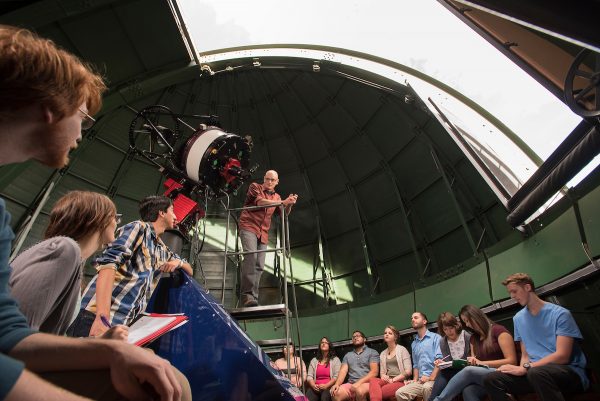
That growth meant not enough offices in the same area so people saw each other in the halls less frequently—so seasoned professor David Trilling started Astrocookies. It brought Cristina Thomas and Mark Loeffler, who worked on the same team at NASA’s Goddard Space Center, back into academia, both citing the mentoring and collaboration opportunities of a growing and changing department as one compelling reason for the move. And it expanded the expertise of the department, with research moving forward on planetary geology and environments, Mars, Planet X, asteroids and more, including about $1.5 million in new grants in the last six months.
“The infrastructure, the faculty, the curriculum and the research are here,” said Stephen Tegler, professor and former department chair. “Adding a Ph.D. program is a natural thing to do for a productive department.”
The quality of the new faculty is a testament to the strength of the faculty who comprised the department; a strong, committed, collaborative group of faculty members is an excellent draw for incoming professors, as is the support from the president’s and provost’s offices and the Office of the Vice President for Research.
Add to that the resources available to NAU researchers—Lowell Observatory and Discovery Channel Telescope, the USGS Astrogeology Science Center, NAU’s partnership in the armada of telescopes the University of Arizona maintains, the U.S. Naval Observatory, the best-preserved meteorite impact crater in the world a mere 40 miles away—and Flagstaff has become a hub for astronomical research and discovery. NAU’s focus on planetary science, which is less common than traditional astronomy programs, also provides opportunities not available elsewhere.
That’s evidenced by students and faculty ranking NAU as a top choice for the kind of people the department leaders envisioned contributing to the research.
“We should be a curious people,” Tegler said. “We have a lot of very curious people in this building, and we try to inspire our students, if they’re not already, to be curious too and develop those skills and techniques.”
Is there life on Mars? And other questions
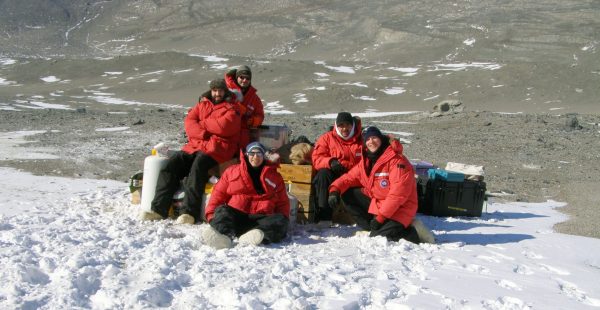
That remains an unanswered question, but the atmosphere, geology and history of Earth’s nearest neighbor, as well as the possibility of it once having sustained life or one day being able to, has brought it to the forefront of astronomers’ studies, including at NAU. Barlow, as well as assistant professors Christopher Edwards and Mark Salvatore, are zeroed in on the Red Planet.
Edwards and Salvatore are associated with the Mars Rover Operations and Analysis Laboratory, a facility opened in 2017 that allows NAU students and faculty members to help command the day-to-day activities of the Mars Curiosity Rover. Both were named to the science team in February 2016 and have grants from NASA to run the lab.
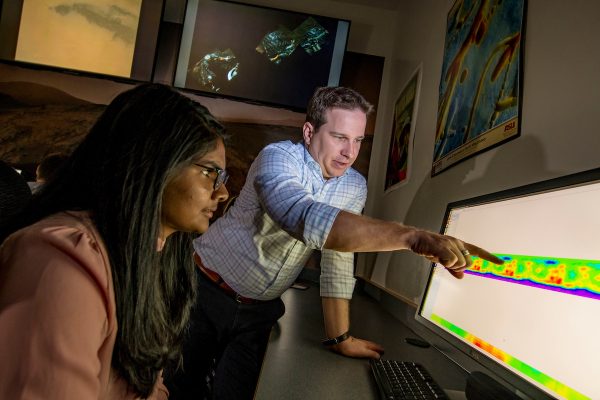
His focus is on geology—examining how the surface of Mars has changed and what those rocks say about Mars itself.
“I’m interested in how planetary surfaces evolve over time—if you leave a rocky surface exposed to cold, dry and stable environments for three and a half or 4 billion years or so, what happens to the surface?” Salvatore said.
To demonstrate, he grabs a rock from his office. It’s not a Mars rock, but it is about the closest we can get to a martian rock on Earth. The two-toned rock in his hand comes from Antarctica, a cold, dry desert that has more in common with Mars than any other place on Earth and has become a viable analog for many scientists who study the Red Planet.
This particular rock comes from one of the ice-free mountains near the South Pole, which experiences similar chemical reactions to the surface of Mars. The top of the rock is flaky and rust-colored from the material oxidizing in the cold air, but underneath it is a hard, solid gray.
“The process behind that is unique to these really cold and really dry environments,” Salvatore said. “You can’t go outside here in Arizona and study that because it’s too warm and too wet. You kind of have to freeze everything—pun intended—you have to freeze everything in place for a very long period of time under cold conditions.”
His work, like colleague Mark Loeffler’s, is Earth-based, or at least surface-based. Neither researcher spends time looking through telescopes examining the sky. Salvatore is a field geologist, picking up and examining the rocks he studies, using the Curiosity rover as his martian “field geologist.” Loeffler is a physicist who takes what is known about planetary surfaces and simulates chemical reactions to those surfaces in his lab to try to determine how they should react when interacting with different compounds or charged particles.
He takes these simulations to astronomers like Tegler, Trilling or Thomas, who examine asteroids, meteors and other space rocks through telescopes, and tells them what they should see in a certain place or explain what to look for on a surface based on the predicted reactions or geology. The astronomers continue the cycle, reporting back what was actually present or any unusual sights that required further examination.
“It’s really good for a lab person to work with observational people because you know what they’re looking at and what they’re interested in, and they can talk to me about what things to look for and what to test,” Loeffler said. “They have data for me to compare, I have data for them to look at.”
One benefit of this type of collaboration is saving time on telescopes, which can cost thousands of dollars per use. Astronomers aren’t just roaming through space looking for new objects or weird planetary occurrences; they can focus on exactly what they’re looking for and gather the necessary data. Maybe they’ll find what they’re looking for, maybe they’ll find something unexpected that presents new questions and requires further study. But neither the scientists in space or the scientists on the ground are going into their research blindly.
What we know about space—and what we don’t
A lot—and a whole lot more.
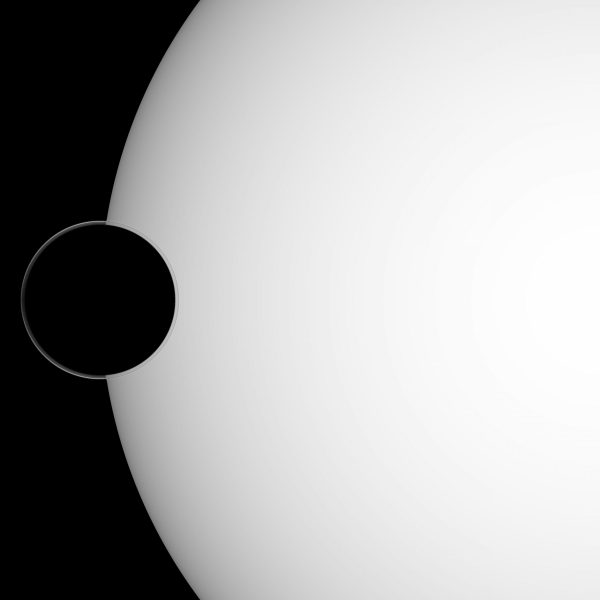
One big question assistant professor Ty Robinson is asking is less about space itself than the equipment scientists use to examine space. He is on a team to potentially build a new telescope that can see beyond the solar system to exoplanets, a heavenly body scientists didn’t know existed until 1995. In the two decades since, astronomers have discovered the most commonly occurring planet is one that is between the size of Earth and Neptune. He finds it curious that our solar system doesn’t have one of these planets.
His latest project, funded by a NASA grant, aims to answer two questions related to these super Earths and mini Neptunes. The first is simple: What could they be like? He’ll run simulations to determine the likely temperatures and atmospheres of these types of planets.
“My intuition is when we actually get to studying these super Earths and mini Neptunes that they’re going to surprise us even beyond what we expect,” Robinson said. “Exoplanets have been a field of surprises. We’re finding worlds we don’t understand, that don’t fit the textbook understanding of how planets form and what planets should be like, so I see no reason why super Earths and mini Neptunes also shouldn’t be diverse and surprising and exciting.”
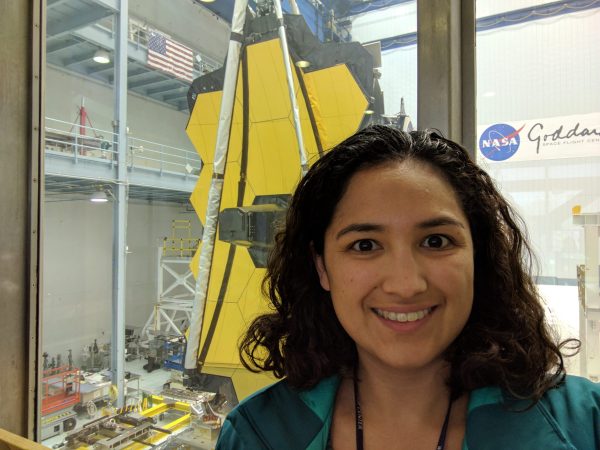
The second is related to the telescope. NASA’s James Webb Space Telescope (JWST) is scheduled to launch and be available for use in 2019. The idea was proposed in 2000, when exoplanets were still new and not as a point of interest. Thus, it’s unlikely it has the capability to see small planets with the clarity scientists need to judge what they’re made of and what their atmosphere is like. Robinson’s project also will determine whether two proposed telescopes, HabEx and LUVOIR, are strong enough to effectively study these planets and tell scientists more about them.
Should the answer be yes—which is his gut feeling, but NASA doesn’t like spending billions of dollars on gut feelings—he is hopeful that one of those two telescopes will be selected as NASA’s next major investment.
Asteroids, however, are well within the purview of the powerful James Webb telescope, and Thomas, who started at NAU this semester, is already in line for 10 hours on one of the best views of space. She is part of a team using the JWST to do a low-level survey of the entire solar system, with her specialty being asteroids. She also uses the Hubble Space Telescope in her work.
Besides that project, she examines near-Earth objects—short-lived space rocks that have broken off from other, larger rocks and are moving through the solar system, eventually getting close to the Earth. (In space terms, both “short-lived” and “near” are relative—these rocks tend to be around for 4 to 5 million years and, while some do hit the Earth or enter its atmosphere, most are farther from Earth than the moon is.) Many of these rocks originate from the asteroid belt, but others come from other parts of the solar system.
“There are a lot of complicated dynamics there,” she said. “The main asteroid belt is one of the key sources that’s replenishing the near-Earth population, essentially constantly. I’ve been working on trying to connect certain types of objects that we see in the near-Earth object space, which of course then creates our meteorite collection, to where they originally came from in the main belt.
“We can start to say things about how the solar system formed, what started where and what the building blocks essentially were.”
Curiosity
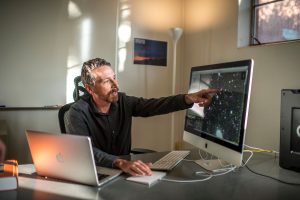
For most Americans, the solar system was a simple thing: Nine planets revolving around the sun. An asteroid belt. Stars everywhere. The occasional comet or, as evidenced by movies, an errant meteoroid heading toward Earth.
That all changed when Pluto was downgraded. Then in 2014, a team of scientists, including NAU assistant professor Chad Trujillo, discovered evidence of the existence of Planet X, which set off a hunt for the planet itself. Then just a few months ago, a mysterious space object rocketed through the solar system, its orbit and speed indicating to astronomers that it came from outside of our solar system—the first such recorded occurrence in human history.
It should, then, be no surprise how much else is happening in space beyond the neat little mobile of elementary school.
It’s also beyond the limits of any one researcher, Barlow said. Space is just too vast and varied for those who study it to not be working with others who are asking similar or complementary questions, leading to collaborations with not only other astronomers but also researchers in geology, biology, physics, chemistry and engineering. Astronomers have studied climate change on Venus to find comparisons to Earth’s changing climate and looked at what extreme environments can sustain some form of life.
“By looking, by stretching our minds at these other worlds and trying to understand them and why they look the way they do today, we get better insights in terms of the Earth itself,” she said. “For a while, we thought ours was the only solar system and wondered how it actually formed. Then we started looking at other stars and found planets around them. Now we know planets are the rule rather than the exception.”
And the more researchers learn, the more questions they have. Loeffler studies the Great Red Spot on Jupiter, well-known even to non-astronomers. It’s most likely a cloud, which seems normal, until he gets into the composition of clouds in deep space, the types of storms Jupiter sees and how they’re different from the storms on Earth. He’s asking the same questions about a type of older, more primitive asteroids that are full of carbon, one of which will get a visit from the OSIRIS-REx mission later this year. (Thomas is part of that project as well.)
“Studying space tells us a little bit about our Earth as well,” he said. “Being able to understand the universe around you matters. There are so many questions; we’re just trying to get a handle on these things.”
After all, Tegler said, humans looking for new worlds has been going on for hundreds of years.
“This is one of the great things that human beings do is explore: exploring science and exploring technology,” Tegler said. “There are so many things in our everyday life that we take for granted. We stop that exploring, we stop our advancement.”